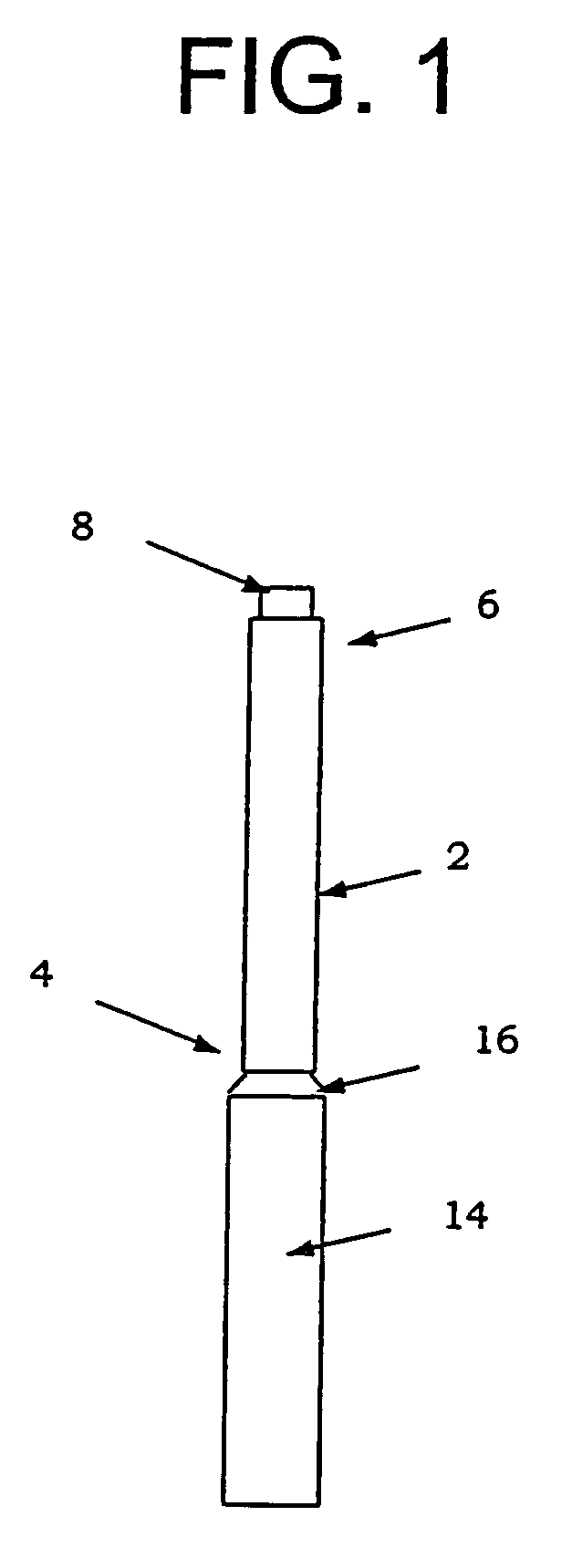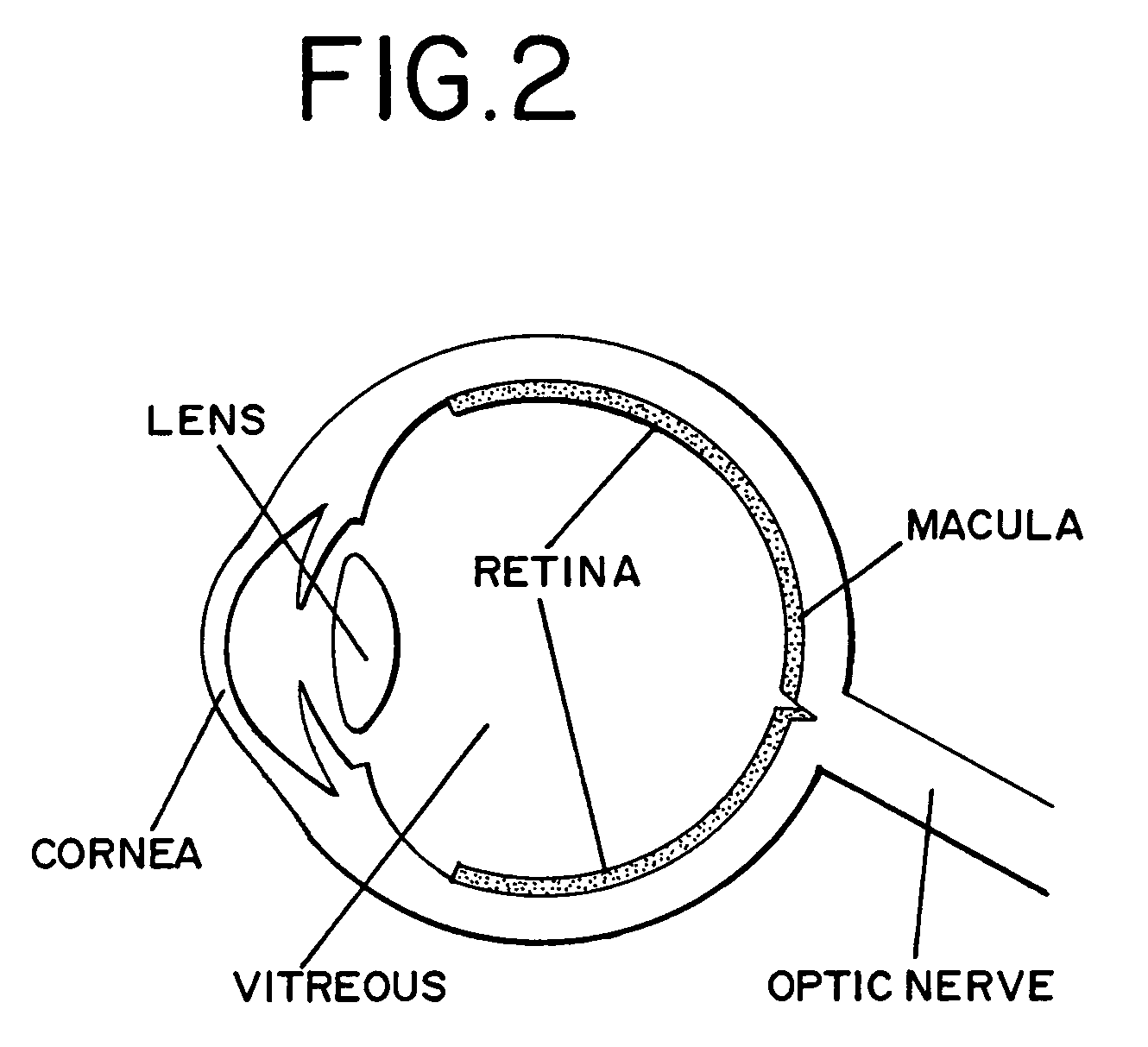Ophthalmic treatment apparatus
a technology for ophthalmology and treatment equipment, which is applied in the field of ophthalmology treatment equipment, can solve the problems of macular degeneration and macular degeneration may experience dimming or distortion of vision, increased risk of developing the condition in smokers and individuals with circulatory problems, and increased risk of developing the condition in developed countries, so as to achieve the optimal balance of power, penetration, and safety.
- Summary
- Abstract
- Description
- Claims
- Application Information
AI Technical Summary
Benefits of technology
Problems solved by technology
Method used
Image
Examples
Embodiment Construction
[0026] Referring now to the various figures of the drawing, wherein like reference characters refer to like parts, there is shown in FIG. 1 a view of a surgical device 1 in accordance with the invention.
[0027] In a preferred embodiment, the surgical device 1 includes a cannula 2, having a proximal end 4 and a distal end 6. Cannulas are well known and, thus, although described below with reference to a preferred embodiment, the general features (e.g. size, shape, materials) of the cannula 2 may be in accordance with conventional cannulas.
[0028] A radiotherapy emitting material 8 is located at the distal end 6 of a cannula 2. The radiotherapy emitting material 8 preferably emits pure beta radiation because beta radiation is easily blocked and, if not shielded, does not penetrate more than about 1-2 mm in human tissue. However, it is possible to use a radiotherapy emitting material 8 that emits very low and insignificant doses of gamma radiation in addition to beta radiation. For exa...
PUM
 Login to View More
Login to View More Abstract
Description
Claims
Application Information
 Login to View More
Login to View More - R&D
- Intellectual Property
- Life Sciences
- Materials
- Tech Scout
- Unparalleled Data Quality
- Higher Quality Content
- 60% Fewer Hallucinations
Browse by: Latest US Patents, China's latest patents, Technical Efficacy Thesaurus, Application Domain, Technology Topic, Popular Technical Reports.
© 2025 PatSnap. All rights reserved.Legal|Privacy policy|Modern Slavery Act Transparency Statement|Sitemap|About US| Contact US: help@patsnap.com


